The content of the article
Almost everyone knows the usual clothes moth. The inconspicuous moth, which flies through the house, brings only inconvenience and annoying. But much worse than its larvae, which feed on fibers of natural fabrics, weave cocoons into them and turn into adult individuals. However, these insects are harmless compared to another type of moth - food. Here we will talk about it today.
Brief introduction to the food moth
The term “food moth” is not entirely correct. They are called several species of small moths. Adult insects are unremarkable: a little larger than a clothes moth in size, a nondescript contrasting color. No one would pay them any attention if it were not for the one problem that comes into the house with the appearance of these moths in it.The fact is that not adults are harmful, which generally don’t eat anything and live for no longer than a week, but their larvae.
Caterpillars also look unremarkable: small (up to a maximum of 1.5 cm in length), whitish (sometimes have pink tones in color), completely bare. Their harm is that the larvae absorb only food. They can attack nuts stored at home, flour, various groceries - and bring significant damage. And in general, it is very unpleasant when, instead of the expected foodstuffs, a whole tribe of growing crawling caterpillars is found. Let the little ones.
Few people know, but in our houses we can have several types of fire attacks. Of course, it is unlikely that anyone will figure out exactly which one he has got, but still it is worth knowing about it.
- The most common - flour. The butterfly has a dark color, and its larvae, as the name implies, willingly feed on flour;
- South Barn - the second in popularity and the first in complexity of breeding. It has a bright color with a predominance of red tones;
- Cocoa This type of moth is very similar to a regular wardrobe, and you will not even understand that there is another mole in front of you.Larvae prefer cocoa.
- The mill - the rarest in urban apartments. It has a gray color, almost imperceptible.
For quite a long time, moths lived in the wild and had nothing to do with humans. Their larvae fed on plants. But with the active development of various storages, both large (barns, grain warehouses, elevators, mills), and small (household storerooms), they began to settle in close proximity to easily accessible food.
Many people and do not try to ponder what the mole flies in front of them. When meeting with these insects, absolutely everyone has one goal: to slam as quickly as possible so that the insect does not multiply and does not harm even more. However, at the place of deployment you can always determine whether the food or clothes moth is in front of you: the first lives in the kitchen, and the second - where the clothes are located.
Causes of food moths in the house
Butterfly moths fly very badly. The larvae also do not really move: almost all their lives, they only eat and grow. When the caterpillar is ready to pupate, it crawls out of its shelter and quickly rises up (as a rule, under the ceiling), where it is firmly attached, creates a cocoon and turns into an adult insect.Only at the time of crawling up the larvae become very nimble. They can be easily noticed.
But once both adult insects and caterpillars are so inactive, how do they manage to get into the food? Everything is simple. That in the house, that in industrial storage pest enters completely by accident. It is brought from the store in cereals, flour, dried fruits. Also, butterflies may be brought along with the crop, inadvertently capturing at the place of harvesting. In private houses, a food mole flies by itself, but in high-rise buildings - only if it is brought along with something.
That is why experts recommend steaming brought cereals, nuts, dried fruits. This way you can destroy the eggs of the pest. However, not all people do this, and many do not even suspect the danger. Well can help and freezing.
What harm does the food mole
The harm from the food moth is difficult to overestimate. Its larvae eat almost everything that can be: various cereals, any bulk products (cocoa powder, sugar, flour, starch), all kinds of dried fruits and nuts, pasta, even sometimes they do not disdain seasonings.Grain, bakery products, cookies, candy can also be affected by the ubiquitous pests.
But the damage is not only that the caterpillars eat stocks in large quantities. They also live in them, leaving the products of their life. The larva is designed so that it should grow as soon as possible. To do this, she has to constantly eat, so in the infected products you will not only be missing a certain mass, but you will also find droppings. In addition, the tracks are constantly weaving thread. With its help, they are protected and moved. This is where the dense lumps of something gray come from in food - these are the remnants of temporary cocoons.
Do not take in the markets and grocery stores at the lowest prices. Often so sold products already infected with parasites. After all, it is quite difficult to get out the mole, but in any case it is necessary to sell the goods. That is why sellers significantly reduce the price. By purchasing such products, you not only waste money, but also bring a fire check into your house.
Get rid of the pest immediately, as soon as you find it. And the faster - the better. After all, adult insects live no more than a week and do not eat anything, because the purpose of their existence is different.In this short time, the female must necessarily mate and lay a few dozen eggs, and the male - to find as many friends as possible for reproduction. That is why the presence of food moths in the house turns into a real disaster.
Ways of getting rid of food moth: folk and modern
The Russian people are familiar with this problem for a long time. And before the advent of special tools, he developed his own ways of dealing with the annoying butterfly. There are several of them, the effectiveness is different:
- Bulkhead all stocks. Check if they are clean. Throw away all old products. If you find something in the larvae, the surest way is to ignite in the oven with a temperature of 60 degrees. And eggs, and caterpillars, and even adult insects will die.
- The use of aerosols. Also quite old and proven method. Handle all food cabinets, bedside tables, drawers with such means as, for example, Antimol. Any aerosol, the action of which is directed specifically against the moth, will do. But this method is not effective enough, all insects will not die from it.
- Use sticky tapes and traps for flies.These tools are great for fighting butterflies. Hang them all over the kitchen and in adjacent rooms. Most insects will fall into traps and die. Remember that it is ineffective to fight only with the larvae, because an adult female is able to lay a huge number of new eggs. Therefore, you need to destroy all without exception.
- Sharp odors. According to folk methods, moths scare various odorous products, and it leaves. For example, chopped garlic, lavender, wormwood, mint, and also can be smeared with vinegar in the storage areas of larvae. This, indeed, helps, but not always. Often the pest adapts to the smell and remains.
- Use of insecticides. In addition to aerosols, there are other means of chemical control of moths. For example, pencils or gels. They can also be used, and it will be quite effective. However, here we should not forget about safety: in no case should chemistry fall for food.
And yet, prevention is much better. It helps to prevent such a problem at all. What are the measures to prevent contamination of food by the larvae of the food moth?
Preventive measures against moths
To fight the pest is quite difficult. There are several reasons for this: it does not immediately become noticeable, it multiplies rapidly and is surprisingly resistant to all influences. Therefore, a better measure than prevention is not found. And it consists in the following:
- The kitchen must be absolutely clean. Insects (and not only the food moth) are found where they do not keep order and allow dirt;
- Be sure to check the products brought from the store for the presence of pests. If the eggs you may not notice, the larvae are always visible. Immediately ignite the contaminated product;
- Store all potential caterpillar food in sealed packages. No canvas or paper bags - only plastic containers with tight lids;
- To prevent insects from penetrating from neighbors or from the street, it is advisable to place small grids on all openings and openings leading to the house;
- You can decompose in the kitchen sharp-smelling herbs and foods. As mentioned above, the mole does not tolerate strong flavors, it flies away.
A mole in a house is in any case a problem, whichever of the species is concerned. If clothes are harmful to clothes, eating them and settling in them,then food does the same with food. Only it is even worse, because it has several different species and multiplies faster. That is why, after seeing a small and seemingly innocuous, inconspicuous butterfly in your kitchen, immediately destroy it. In addition, be sure to check the stocks of food: what if there already a dozen small caterpillars feed there?
The main way in which the pest enters the house, begins from the store. There are often sold already infected cereals, sugar, flour, etc. This happens because at the stage of harvesting, harvesting and packaging, workers did not notice the caught butterflies. In any case, after the insect has penetrated into the house, it has already become your problem, and it needs to be addressed in a timely manner. Be attentive to what you bring in your bags from stores.
The food moth is a small but very terrible pest. It can easily destroy most stocks. But now you know almost everything about this enemy and you can safely proceed to the prevention of its appearance and the fight against it.
Video: how to get rid of food moths in the apartment

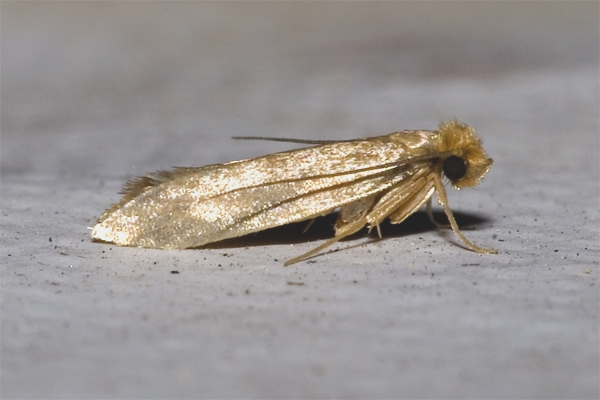

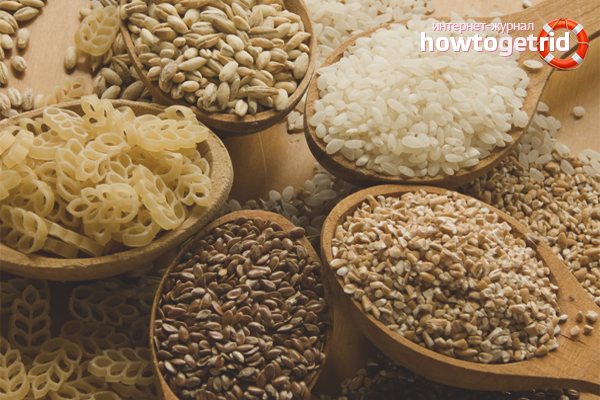

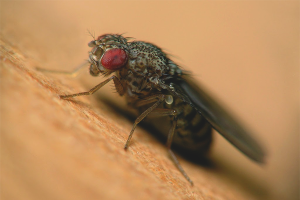
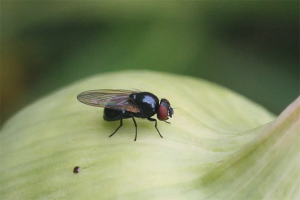


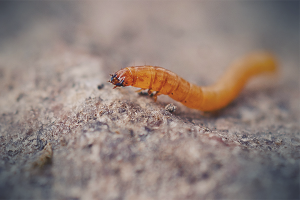


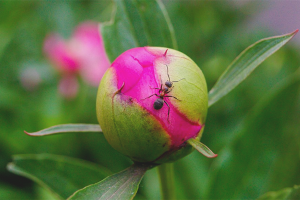
To send